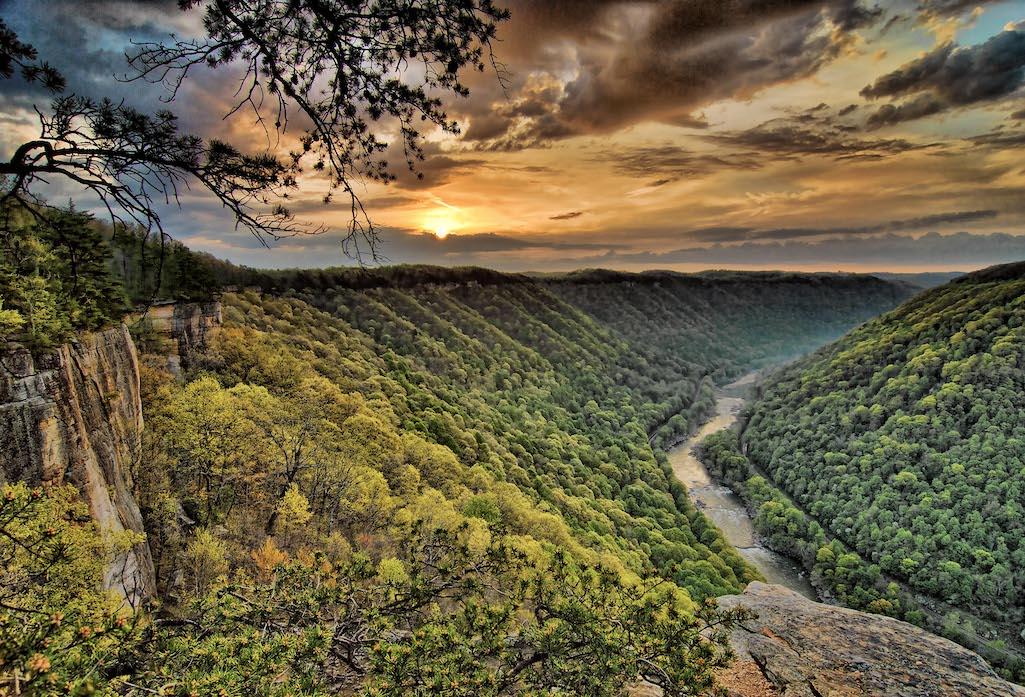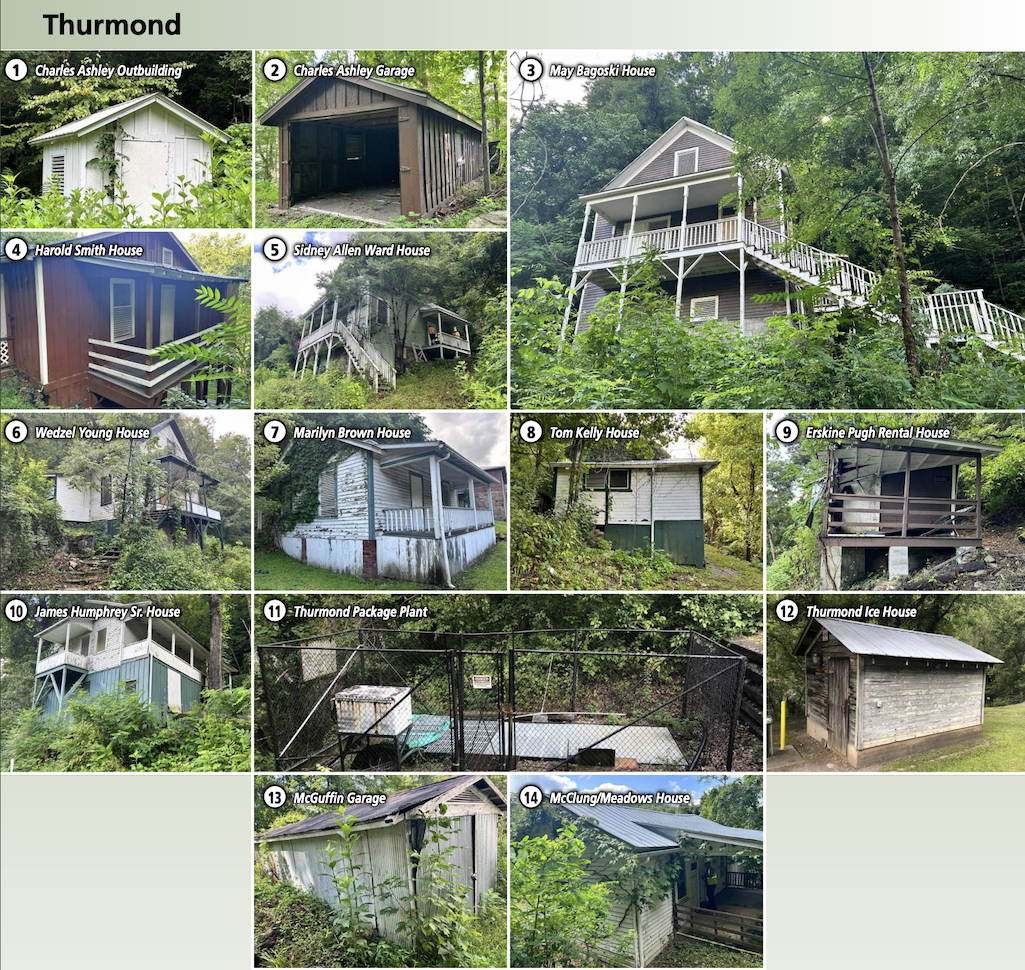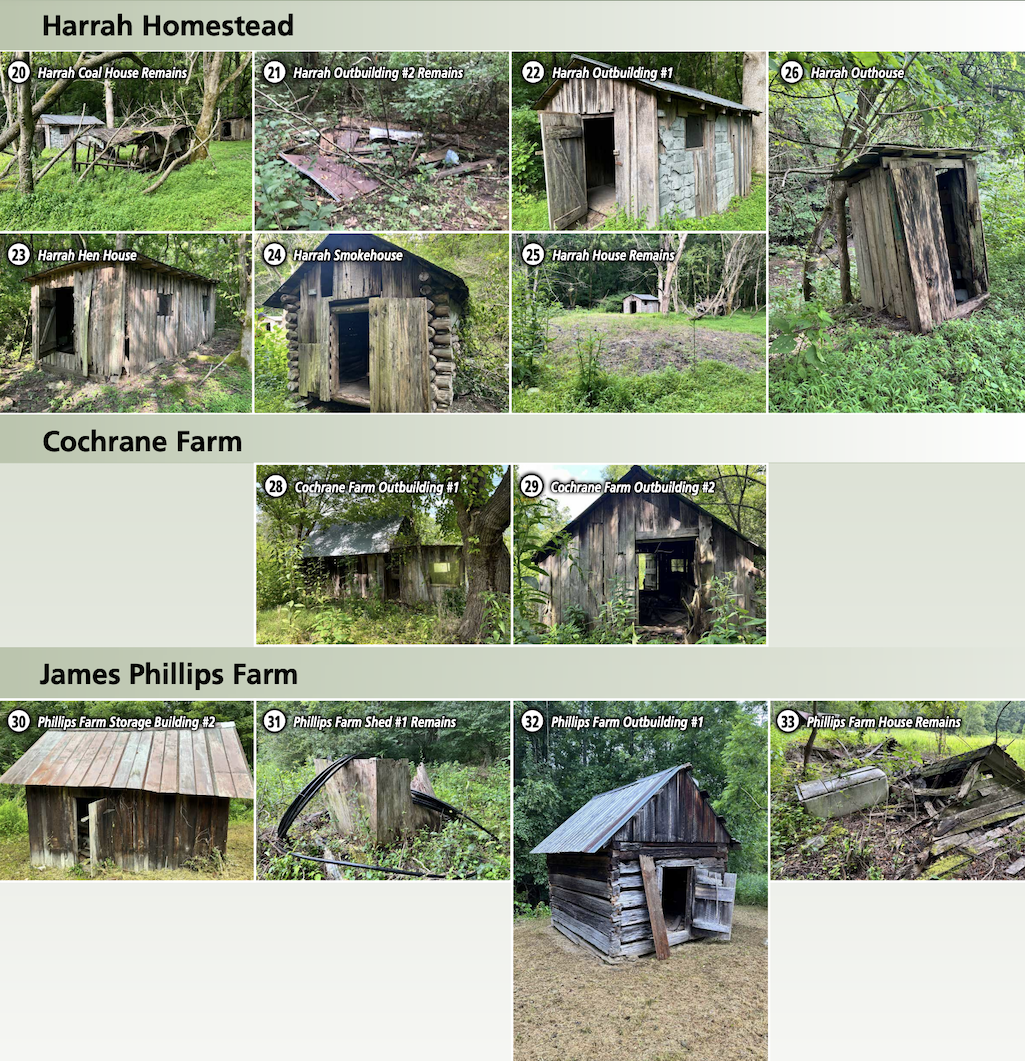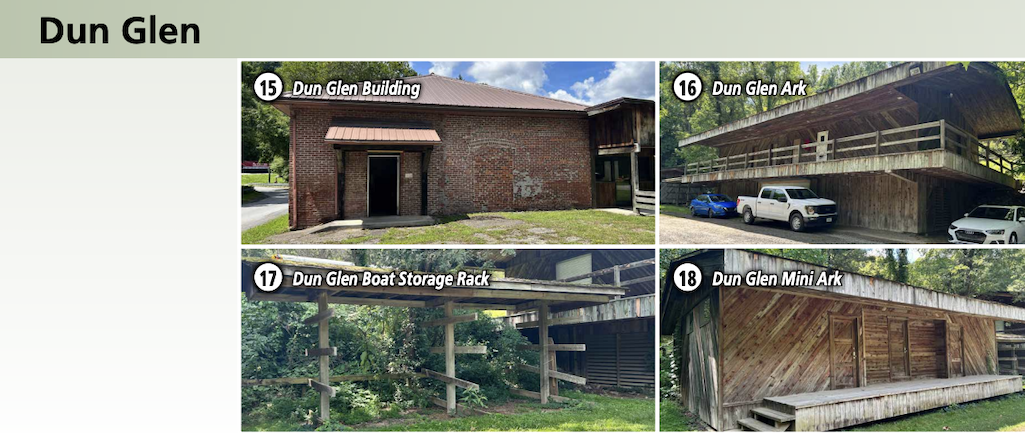
Nearly three dozen unneeded structures are proposed for demolition at New River Gorge National Park and Preserve/NPS file
Editor's note: This updates with some additional details, photos of some of the buildings that might be demolished, and updates the date of the public meeting from January 10 to January 11, same time and location.
More than two dozen old, deteriorating, and unneeded buildings, from outhouses and houses to hen houses and smokehouses, are being proposed for demolition at New River Gorge National Park and Preserve in West Virginia.
Some of the buildings were built for railroad managers, some for railyard workers, at least one was part of a hotel that burned in 1930, some were used in the early days of white-water rafting on the New River. Some structures were deemed not be historic and that removing them would open up more recreational area for park visitors while reducing maintenance work for the National Park Service.
"Many of the buildings and structures came into the possession of the NPS through land acquisition within its established boundaries; most were not intended for occupation or use and are now abandoned, dilapidated, and overgrown," a report on the structures reads. "The structures are safety hazards that are vulnerable to trespassing and vandalism and a burden to maintain."
The project also calls for some historic buildings to be stabilized to prevent further deterioration and allow for possible re-use of the structures. Buildings in this category include "the National Bank of Thurmond, the Goodman-Kincaid Building, and the Mankin-Cox Building comprising Commercial Row as well as the Fatty Lipcomb, McClung, and McGuffin Houses on the hillsides."
In the case of the Vallandingham House [No. 35 below], the Park Service is proposing to "remove a contemporary addition that does not contribute to the historic significance of the farmstead. This would result in a restoration of its historic integrity of design, feeling, and association because the structure would more accurately reflect its appearance during the period of construction." Left standing would be "a significant example of 18th century log cabin construction. Because the rear addition is reversible and does not change the main façade of the structure, and because of the presence of several outbuildings with good integrity, the structure retains enough historic integrity to convey its significance as an example of an 18th century farmstead."
You can find more details on the structures proposed for demolition at this site.




A public meeting will be held in early January to discuss the work. The proposal is part of a larger project within the park funded by the Great American Outdoors Act Legacy Restoration Fund to rehabilitate historic structures, invest in park infrastructure, address deferred maintenance needs, and reduce unnecessary operational costs and maintenance burdens.
The meeting will take place on January 11, 2024, from 3:30 p.m. to 5:30 p.m. at the Bank of Glen Jean at 23 County Route 25/9 in Mt Hope, West Virginia. At the meeting, the Park Service staff will provide information regarding the proposal to demolish 35 deteriorating and excess structures, 21 of which are considered historic and are either listed, or eligible for listing, in the National Register of Historic Places.
For those unable to attend the public meeting, the public materials and additional information will also be available until January 15 on the Park Service planning website at https://parkplanning.nps.gov/GAOAExcessStructureDemo.
The proposal includes removing the hazardous structures, disposing of all associated building debris properly, and restoring the sites to a condition consistent with their natural surroundings. Impacts related to removal of these structures from the park will be assessed through the National Environmental Policy Act and the National Historic Preservation Act compliance processes.
Many of the buildings and structures came into the possession of the Park Service through land acquisition within established park boundaries, the agency said in a release. Most were not intended for reuse by the Park Service and are now abandoned, dilapidated, and overgrown safety hazards that are vulnerable to trespassing and vandalism and are a burden to maintain, it added. Removing the unnecessary structures would address deferred maintenance needs and eliminate excess yearly maintenance and law enforcement costs, allowing staff to focus attention and financial resources on maintaining other facilities and resources that park visitors can enjoy.
The structures considered for removal through this project are:
- Charles Ashley Garage
- Charles Ashley Outbuilding
- May Bagoski House
- Harold Smith House
- Wedzel Young House
- Tom Kelly House
- Thurmond Ice House
- McGuffin Garage
- Erskine Pugh Rental House
- Philip A McClung/Meadows House
- Sidney Allen Ward House
- Thurmond Package Plant
- James Humphrey Sr. House
- Marilyn Brown House
- Dun Glen Building
- Dun Glen Ark
- Dun Glen Mini Ark
- Dun Glen Boat Storage Rack
- James K Carper Barn
- Harrah Coal House
- Harrah Outbuilding #2 Remains
- Harrah Outbuilding #1
- Harrah Hen House
- Harrah Smokehouse
- Harrah House Remains
- Harrah Outhouse
- Prince Brothers' General Store
- Brookside Pool Chemical Treatment Building
- Cochrane Farm Outbuilding #1
- Cochrane Farm Outbuilding #2
- James Phillips Storage Building #2
- James Phillips Farm Shed
- James Phillips Outbuilding #1
- James Phillips House
- Vallandingham House Addition
The NPS plans to complete its environmental and cultural review process for this project in mid-2024 with the goal of implementing the demolitions as early as next fall.



Comments
Houses are history.
I'm sorry to burst the bubble, but when a park becomes a National Park and contains items, locations, or artifacts listed in the National Historic Registry, it is supposed to be against Federal Law to "remove, deface, or disrupt" said items. These properties are a part of history. They should either be kept up or allowed to "Naturally" return to nature. Yes, I said what I said.
I disagree. Only buildings with significant historic or cultural significance should be kept. If the NPS acquires land that has various random ranches or basic agricultural infrastructure, those should just be removed.
If any of these buildings are listed on the National Historic Registry, then they should stay.
Why not restore some of these buildings and repurpose them? For example - Prince Brother's/Monk's General Store!! It could be restored and repurposed as a touristy spot. Maybe even open a roadside store that could sell souvenirs!! Top floor could be rented out as either a place for travelers to spend nights or as a place for meetings to be held?
As for picture #34 Brookside Pool Chemical Treatment Building - it doesn't appear to be a business, but an actual house!! Someone has even replaced some windows (which are quite obvious in the picture!)
Not enough people realize the history WV holds in its mountains, forests, and hills. Tearing down buildings is such a shame!! NPS had to KNOW these were there when they purchased the area as a National Park!! NOW they want to destroy some of the history that makes the area what it is - historic?!?
That's not fair to WV residents, history lives and even visitors to the ONLY National Park in WV!!
It would be nice to see pictures of the proposed buildings to be demolished.
NPS is about to commit sacrilege by demolishing buildings in the New River Gorge and in the town of Thurmond. Sad, indeed.
Everything seems possible - when you don't have to implement it!
Properties are acquired all the time with no idea concept of how NPS will pay to operate these things and no new money. I applaud the park for moving this forward.